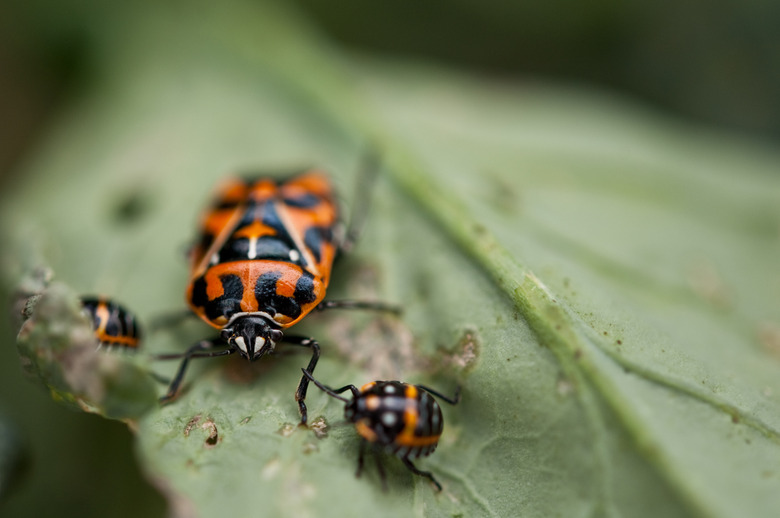How To Control Harlequin Bugs
The brightly colored patterns of harlequin bugs (Murgantia histrionica) evoke the comical characters who inspired their name, but there's nothing humorous about the damage caused by these destructive pests. Harlequin infestations can leave your garden in ruin, especially when their favorite crops are involved. With vigilance and diligence, you can control harlequin bugs in your garden and keep plants healthy and harlequin-free.
The brightly colored patterns of harlequin bugs (Murgantia histrionica) evoke the comical characters who inspired their name, but there's nothing humorous about the damage caused by these destructive pests. Harlequin infestations can leave your garden in ruin, especially when their favorite crops are involved. With vigilance and diligence, you can control harlequin bugs in your garden and keep plants healthy and harlequin-free.
Knowing Your Enemy
Harlequin bugs are distinctive at each stage of life. Found clustered on the undersides of leaves, their eggs look like miniature barrels with two black bands and a black "C" on top. They always appear in rows of six. Harlequin nymphs resemble rounded, black beetles with pale-green markings that quickly turn to bright red, yellow and orange. The shield-shaped, patterned bodies of harlequin adults may be red and black or yellow and black, with seasonal changes. In warm climates, harlequin bugs reproduce year-round and have two to four hatchings per year. The adults overwinter in plant debris and begin the cycle anew each spring.
- The brightly colored patterns of harlequin bugs (Murgantia histrionica) evoke the comical characters who inspired their name, but there's nothing humorous about the damage caused by these destructive pests.
- The shield-shaped, patterned bodies of harlequin adults may be red and black or yellow and black, with seasonal changes.
Recognizing the Damage
Of all the plants in your garden, harlequin bugs prefer cole crops best. Annual vegetables such as cabbage, broccoli, kale and cauliflower (all sharing the botanical name Brassica oleracea) bear the brunt of harlequin damage. When these favorite crucifers are in short supply, the bugs move on to other vegetables, fruits and even ornamentals. Both nymphs and adults have piercing-sucking mouthparts that damage all plant parts from stems to seeds. The bugs suck out plant juices and leave white stippling damage in their wake. Leaves wilt and turn brown, become disfigured and deformed, and plants die from extensive damage.
Avoiding Invasions
Proper plant culture, prompt intervention and good sanitation prevent serious harlequin infestations. Healthy plants resist pests and tolerate damage better than stressed plants. Monitor harlequin-preferred crops closely, watching for the distinctive eggs and insects. Manually remove eggs, nymphs and adults from plants before the bugs take hold. Harlequins are stink bugs, so drop them in soapy water to avoid the stink they make when crushed. Plant harlequin-resistant varieties of their favorite plants, and consider row covers for added protection. Keep gardens free from weeds, and clean up all debris. If you till, do it in late autumn to disrupt and reduce overwintering adults.
- Of all the plants in your garden, harlequin bugs prefer cole crops best.
- Harlequins are stink bugs, so drop them in soapy water to avoid the stink they make when crushed.
Battling the Bugs
Introducing natural parasites and predators reduces harlequin populations. Parasitic wasps, pirate bugs and praying mantis are their natural enemies. Turn to pesticide sprays as a last resort. Neem oil treats harlequin eggs and nymphs, and pyrethrum-based products treat nymphs and adults. With 1 gallon of water, mix 2 to 4 tablespoons of neem concentrate or 3 to 5 tablespoons of pyrethrin concentrate. For either spray, cover upper and lower leaf surfaces thoroughly. Spray every seven to 14 days, up to the day of harvest. Wear gloves, protective clothing and safety goggles when you mix or spray. Note that these pesticides can't distinguish between harmful harlequins and beneficial insects.
- Introducing natural parasites and predators reduces harlequin populations.
- Parasitic wasps, pirate bugs and praying mantis are their natural enemies.
